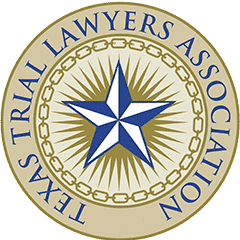If you have been involved in an injury accident and are disheartened by the insurance company’s lowball offers and endless delays, you’ve probably asked yourself, “Why?”
- Why does the settlement process have to be so difficult?
- Why is the insurance company being so blatantly unreasonable?
- Why is the adjuster dragging his feet?
To answer these questions, you need to understand how insurance companies work. Armed with this knowledge, you will be better equipped to deal with the frustrations of the claims settlement process.
Download The eBook Instantly

Basic Insurance Company Activities
The work of an insurance company involves five distinct activities:
- Actuarial. An “actuary” is a specially trained mathematician. It is the actuary’s job to calculate policy premiums based on risk factors and actual claims experience.
- Underwriting. Underwriters evaluate risk and decide whether that risk ought to be insured.
- Marketing. Marketing is the job of the insurance “agent,” who sells the company’s insurance
policies for the established premium. - Investing. Insurance companies are in business to make money. When the company makes
money, it is invested to generate greater profit. - Claims. The claims department is responsible for processing and paying claims on insured events.
The first four activities are income-generating activities. Paying claims, however, is an income-drain- ing activity. Every claim paid is money lost for the insurance company. Consequently, insurers are always looking for ways to turn the claims department into a profit center or, at the very least, to minimize their losses.
Business Model of Large National Insurance Carrier
Most large, national insurance carriers operate with a military-style hierarchy, in which any decision of any consequence must be reported upon and approved up the chain of command. “Local” offices report to “regional” offices. Regional offices report to the “home” office. This rigid reporting structure can be frustrating for claimants because of the delays often generated by this type of bureaucracy.
Claims Department Hierarchy
Following an injury-accident, your attorney will be dealing with the claims department. Although there may be slight differences from carrier to carrier, in general, the claims department will be structured as follows:
Claims Manager
The local office of a large, national insurance carrier is usually run by a claims manager – a long-term, loyal employee who is responsible for overseeing settlements, general claims practices, and lawsuits. The claims manager typically wields significant power in small-to-medium-sized cases.
Claims Supervisors
Claims supervisors typically are responsible for supervising a dozen or more claims adjusters. The claims supervisors report directly to the claims manager. They are the “middle management” of the claims department.
Claims Adjusters
At the bottom of the claims department hierarchy are the claims adjusters. Adjusters are responsible for the day-to-day handling of claims. The adjuster’s job is to negotiate settlements and close files, and to do so as efficiently and cheaply as possible. An adjuster in the local office of a large national carrier is likely to be responsible for 100-200 claims files at a time. This heavy workload means that most adjusters are able to devote just a few minutes per week to the average claim.
How the Claims Department Works
Step 1: Claims Supervisor Sets Initial Reserve
Upon receiving a notice of claim, a claims supervisor will assign the claim to an adjuster and set the initial “reserve” on the claim. The “reserve” is the amount of money the insurance company sets aside (or “reserves”) for paying a claim; it represents the total estimated cost of the claim to the insurance company.
In almost every case, the initial reserve is nothing more than a guess, based on very little information. When a claim first comes in, the supervisor generally is presented with a standardized form (called an ACORD form) that provides the insured’s name and contact information; a brief description of the accident; and a brief description of the injuries involved. Based on this barebones information, the supervisor will set the reserve.
The reserve is important because it serves as a ceiling on the value of your claim. Once it is firmly established (usually within 6 months of the filing of a claim), it is very difficult to get the carrier to raise that ceiling.
Step 2: Claims Adjuster Investigates and Reports to Supervisor
The adjuster’s preliminary investigation will focus on three factors:
- Coverage – What type of coverage is involved? Are the events that led to the claim covered by the insured’s policy? Are there grounds to deny coverage?
- Liability – Who is at fault?
- Damages – What is the nature and extent of your injuries?
As part of his investigation, the adjuster will:
- Interview the parties involved (e.g., the drivers of the vehicles involved in the accident), to get each person’s version of the facts. If possible, the adjuster also will interview known witnesses to the accident. These interviews usually are conducted by phone, but may be conducted in person.
- Obtain and review official records, including the police report and any reports filed with the Department of Motor Vehicles, if these documents exist.
- Obtain and review your medical records, including medical bills, related to the incident. The adjuster either will ask you to provide these records or will ask you to sign a medical records authorization, allowing the adjuster to obtain these records directly from your medical providers.
- Visit the scene of the accident to take photos, prepare diagrams, and make notes of his observations.
- Enlist an appraiser to evaluate the damage to both vehicles and the repair estimates.
The adjuster will prepare a report of his preliminary investigation. This report typically is due to the claims supervisor within 15 days of receiving notice of the claim.
Caution: The adjuster is not your friend
Before you hire an attorney, the adjuster may ask permission to record his interview with you or ask you to give a recorded statement. Don’t do it. Remember that the adjuster’s job is to settle your claim for as little as possible; if you give a recorded statement, the adjuster will parse that statement, looking for ways to use your words against you.
Likewise, do not sign a medical authorization. Even though it might sound like a generous offer by the adjuster – just sign the form and the adjuster will do all the work in gathering your medical records – it is not that simple. The language of medical authorizations can be very broad. You do not want to inadvertently allow the insurance company to go on a fishing expedition through your entire medical history. Allow your attorney to gather your medical records and present them to the adjuster.
Step 3: Supervisor Adjusts Reserve
In light of the new information contained in the adjuster’s report, the supervisor will adjust the reserve.
The reserve will be evaluated every time the supervisor picks up the file. The last thing an adjuster or claims supervisor wants to do is to carry a $10,000 reserve for a year, and then suddenly have to raise the reserve to $100,000. It is embarrassing for an adjuster to have to file a report containing such a large and unanticipated bump in the reserve. That type of report demands a great deal of explaining and triggers intense scrutiny from the adjuster’s superiors.
Step 4: Investigate, Report, Reset Reserves
After submitting his initial report, the adjuster then will have an additional 60-90 days, depending on the seriousness of the claim, to investigate further and gather more information. During this time, the adjuster may conduct follow-up interviews or interview witnesses who previously were unavailable.
He will be particularly interested in your medical condition and treatment, and will closely monitor your progress toward recovery. The adjuster then will submit a second, more extensive, report to the claims supervisor. Based on this additional information, the supervisor will review and reset the reserve on the claim.
Step 5: Negotiate a Settlement
Negotiations will now begin in earnest. The adjuster will be the point person for the insurer in the negotiations, but his ability to settle the claim will be limited by the authority granted to him by the claims supervisor or claims manager. Generally, this authority is meted out in small increments of not more than a few thousand dollars at a time.
Thus, if the adjuster has authority to settle a claim for $20,000, he cannot agree to a $25,000 settlement without justifying the increase and obtaining authority from a supervisor or manager. If the value of the claim exceeds the claims manager’s authority, he will have to seek approval up the chain of command, from the regional office or home office.
How the Insurance Company’s Business Model Affects You
Now that you understand how insurance companies operate, let’s return to our original questions:
Why Is the Settlement Process So Difficult?
The rigid hierarchical structure of most large national insurance carriers demands that every decision be reported upon and approved, up and down the chain of command, before any real action can be taken. Inevitably, this type of bureaucracy delays the processing of a claim, and both frustrates and infuriates most claimants.
Why Is the Insurance Company Being So Blatantly Unreasonable?
An insurance company is a for-profit business. The company leaders want all phases of the business – including the claims department – to turn a profit.
Why Is the Adjuster Dragging His Feet?
The claims adjuster works for the insurance company, not for you; therefore, you and the adjuster are working at cross-purposes. Your goal is to maximize your settlement. The adjuster’s goal, on the other hand, is to minimize your settlement, in order to protect his employer’s best interests and, by extension, his own.
The more cases the adjuster resolves at or below the stated authority, the better his performance evaluations and the greater his reward in terms of raises, bonuses, promotions and other employment-related benefits.
Moreover, unless you are willing to accept the adjuster’s first (and lowest) offer, there may be little benefit to the adjuster in settling early. Any delay allows the adjuster more time to gather information about the claim, your injuries, your treatment and your prognosis.
Because a settlement delayed is money in the insurer’s pocket, the adjuster may use a number of techniques to stall you and test your resolve. The adjuster is hoping to delay payment long enough to uncover information harmful to your case (e.g., a pre-existing injury or a history of accident claims) or to wear you down to the point that you are willing to agree to a lower settlement just to have the matter over and done with.
To Sum Up…
- Large national insurance carriers are for-profit businesses that operate with a military-style hierarchy.
- In the local office of a national insurance carrier, the claims adjusters report to a claims supervisor who, in turn, reports to the claims manager.
- The claims adjuster works for the insurance company, not for you.
- An adjuster’s performance is evaluated according to how efficiently and inexpensively he settles claims.
- The “reserve” is the amount the insurance company has earmarked for payment of a claim. Once the reserve on a claim is firmly established, it is a difficult and time-consuming process to get the insurance company to raise that ceiling.
- Every time the claims file gets picked up, it’s the adjuster’s or supervisor’s job to make sure the reserves are in order. The more information you and your personal injury attorney provide to the adjuster, the more often he will be forced to review your file and adjust the reserve.
- The adjuster generally will be in no hurry to settle your claim. The essence of stonewalling is to drag out an insurance claim for a period of months or even years before paying a reasonable settlement. The adjuster will use any number of negotiating “tactics” to delay payment and test your resolve.
- Having a personal injury attorney on your side levels the playing field. Your personal injury attorney will recognize the adjuster’s tactics for what they are, and work to negotiate a fair and reasonable settlement on your behalf.
Get a Free Case Consultation
Before you negotiate or sign anything, learn your rights and how to protect yourself and your family. A personal injury lawyer can talk to you about your legal options, how to avoid common mistakes, and how to maximize your claim.
Contact McKay Law now to discuss your case at (903) INJURED / (903) 465-8733 or (903) ABOGADA / (903) 226-4232. The consultation is free, and there is no obligation. NO FEES UNLESS WE WIN!





























